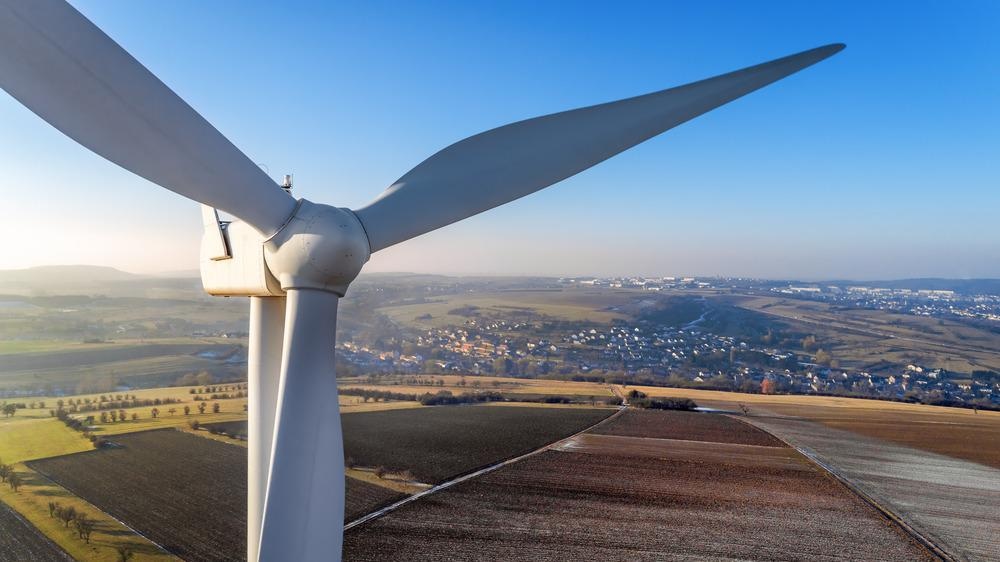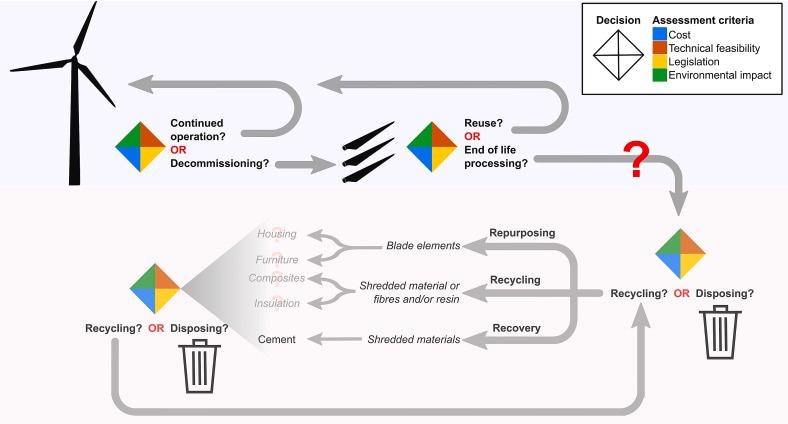Wind turbines are a vital element of the move toward net-zero carbon emissions. However, challenges currently exist in dealing with turbine blades at the end of their service life. To provide an overview of the current problems facing the wind turbine industry in respect to turbine end-of-life, a paper has been published in Renewable and Sustainable Energy Reviews.

Study: The complex end-of-life of wind turbine blades: A review of the European context. Image Credit: Ppictures/Shutterstock.com
The Problem with Turbine End-of-Life
Whilst wind turbines are an important part of the renewable energy mix, recycling the turbine blades at the end of their service life is a challenging task. This is perceived as counterproductive to the aim of reducing the environmental impact of the global energy grid. Turbine blades contain materials, primarily glass fiber reinforced thermoset polymer composites, which are difficult to re-process into new ones.
Whilst considerable progress has been made in the design of wind turbine blades to make them more efficient, the situation with disposing or recycling their materials is at present largely unchanged.
Industrial-scale recycling solutions for the complex composite materials in them are still unavailable, although significant research has been conducted in this field, providing some degree of progress. Recycling plastic and polymer composite materials in wind turbines is a hot topic.
To date, efforts have focused on the development of technical processes to recover materials from the composites or shred them. There has, up until now, been little focus on providing perspectives on the entire recycling chain and aspects such as regulations, the economic impact, social perceptions, and environmental impact of the process.
Considering and Categorizing the Challenges
The study published in Renewable and Sustainable Energy Reviews has sought to discuss and categorize these challenges by taking a comprehensive approach. The study seeks to provide a broad perspective on the problem with end-of-life recycling and uncover problem areas that can be solved by initiatives.
The study considers several areas. Firstly, a prediction of future end-of-life turbine blades is presented to demonstrate the scale of the problem. Secondly, regulatory frameworks for the recycling of end-of-life blades and their composite materials are discussed. Additionally, the study discusses current technical solutions which are being investigated or implemented at the industrial scale.

Value chain of the end-of-life of wind turbine blades. Image Credit: Beason, J et al., Renewable and Sustainable Energy Reviews
Finally, the study provides an overview of the main points of the previous three sections in light of innovative approaches that could be implemented in the field. The study also provides a perspective that is rarely discussed in the field, which is the social acceptance and perception of decommissioning processes and wind energy system end-of-life.
Several alternative approaches are detailed in the study to demonstrate how improvements could be made in the disposal or recycling of end-of-life wind turbine components and materials. These include the benefits of integrating the principles of circular economy processes and engineering methods, reducing resource consumption, and improving waste management.
End-of-Life Value of Turbine Blades
The study presents an end-of-life value chain that governs the process of use, disposal, and reuse of end-of-life turbine blades. Criteria used for decisions are cost, technical feasibility, environmental impact, and regulations.
There are two major phases in the model: operations and reuse, and recycling and transforming blades into new materials or disposing of them, depending on the criteria set out in the model. The final step in the model is disposal, including landfills.
Specific economic considerations highlighted by the research include the profitability of continued turbine operations or whether the blade can be sold as spare parts.
Technical considerations include the damage state of the blades, and whether it is possible to recover materials for use in other applications such as furniture or construction. Regulatory considerations include legislation on landfilling or reuse. Environmental considerations include the impact of turbine operation vs decommissioning.
A conclusion of the study is that it is difficult to quantify the flow of materials with precision, in respect to volumes, geographical location, material specifications, and time of availability. Additionally, regulations differ country-by-country and landfill taxes vary as well.
As far as reuse of materials goes, whilst shredded composites make for attractive uses in areas such as construction and furniture, there is no standard which frames their properties and characterization. Additionally, the materials may be expensive and of inferior quality.
The Future
The research paper is a comprehensive review that considers economic, technical, regulatory, and environmental challenges, and additionally considers the social perception of end-of-life disposal and recycling of wind turbine parts. The problem faced by the industry is a complex one that the study seeks to address and categorize, providing a knowledge base for future developments in meeting the challenges of end-of-life wind turbine disposal and material reuse.
Further Reading
Beason, J et al. (2021) The complex end-of-life of wind turbine blades: A review of the European context [online] Renewable and Sustainable Energy Reviews | sciencedirect.com. Available at: https://www.sciencedirect.com/science/article/pii/S136403212101114X
Disclaimer: The views expressed here are those of the author expressed in their private capacity and do not necessarily represent the views of AZoM.com Limited T/A AZoNetwork the owner and operator of this website. This disclaimer forms part of the Terms and conditions of use of this website.